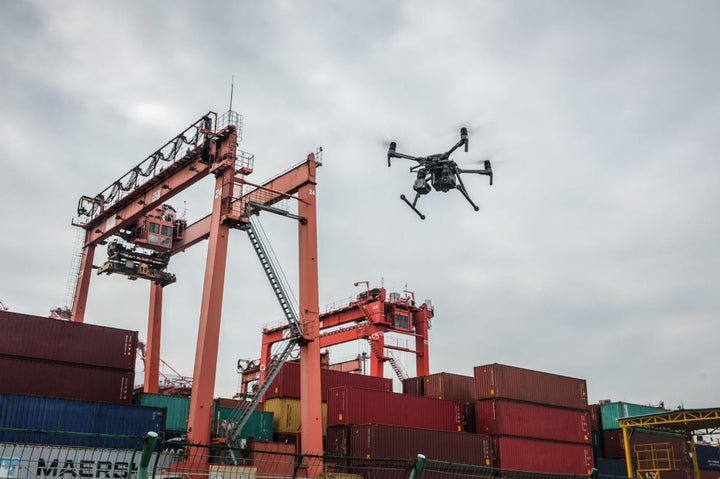The Nitty-Gritty of Drone Batteries: Flight Time, Charging and Charging Stations
The Drone Power Triangle
If you're a drone enthusiast, you're probably aware of the three crucial aspects determining your flight experience; the efficiency of the drone batteries, its long flight time, and the convenience and reliability of the charging and charging stations. These factors are so intertwined that failing to pay attention to one can eventually make the other two redundant. In this blog post, we delve into the depths of drone battery technology, the importance of maximizing flight time, and the pros and cons of various charging methods and charging stations. Stick around as we dissect the drone power triangle to elevate your in-air experience.
Intelligent flight Battery Technology
At the heart of any drone is its battery, which supplies power for flight and onboard systems. Today's drone industry primarily relies on Lithium Polymer (Li-Po) drone batteries due to their high energy density, lightweight, and the ability to discharge at an impressive rate. For a better flight experience, choose drone batteries with a bit more capacity (measured in milliamp-hours or mAh) to store and deliver energy more efficiently. Bear in mind that greater capacity typically means a larger, heavier battery, so finding the sweet spot between capacity and weight is crucial for optimal drone performance.
Flight Time and its Importance
Flight time is a crucial indicator and important aspect for professional drone users, especially for aerial photography, survey, and search & rescue operations. A longer flight time translates into more time in the air to accomplish the task at hand. The flight time of a drone depends on several factors, including the drone's design, weight, motor efficiency, and of course, the drone batteries capacity. To maximize your drone's flight time, you may consider upgrading to a higher-capacity battery, ensuring your drone is serviced regularly, and adopting energy-saving flying techniques.
Charging Your Drone Batteries
Charging drone batteries properly is essential to ensure their longevity and to maintain a consistent flight experience. When charging Li-Po drone batteries, it is vital to use a compatible charger with the appropriate settings concerning voltage and current for the specific battery. Charging with a current too low or too high can damage the drone batteries, reduce overall battery life, or create a fire hazard. To avoid overcharging, use a charger with a built-in balancer, which monitors each cell in the battery and automates the charging process to discharge any overcharged cells safely.
Charging Stations and Portable Chargers
The availability of practical and reliable charging solutions is essential for drone users, especially for those needing to recharge their batteries in remote locations. Charging stations offer effortless charging of multiple batteries simultaneously, thus saving time and ensuring an uninterrupted flight experience. Portable chargers come in handy for example, when you need to charge your drone batteries on the go without access to electricity. These chargers may rely on solar, vehicle power outlets, or even a well charged standalone battery to recharge your drone batteries.
DJI Avata Battery Charging Hub | unmanned.store
Autel Robotics EVO 2 Drone Batteries Charging Hub
Similar products you may be interested in:
Autel Robotics Evo 2 Battery Charging Hub | unmanned.store
Autel Robotics EVO 2 Drone Batteries Charging Hub
Similar products you may be interested in:
DJI BS60 Intelligent Battery Station | unmanned.store
The battery station manages up to 8 Drone batteries and 4 remote controller batteries, while fast charging allows you to conduct your missions without running out of power. Compatible with TB60.
DJI Mavic 2 Car Charger | unmanned.store
The Mavic 2 Car Charger has a maximum output power of 80W, allowing you to charge Drone batteries while driving. It features overheating protection and low-voltage protection technology to ensure you achieve a safe and reliable full charge, and drive.
Finding the Right Charging Solution for You
The choice of an ideal charging solution depends mainly on your usage patterns and your drone batteries requirements. For home users, a standard charger may suffice, provided it is compatible with the battery and includes essential safety features like a built-in balancer. Professional users of drones often have more power and need charging stations that support multiple drone batteries, offer quick charging solutions, and have versatile input options. Portable chargers are recommended for drone users frequently operating in remote areas or requiring quick battery swaps on the go.
Tying It All Together
Drone battery technology, flight time, and efficient charging & charging stations form components of the drone power triangle, where each aspect affects the overall flight experience. A deeper understanding of these factors will help you make faster and more informed decisions when choosing a drone, drone batteries, and the best charging solution for your needs. By treating the power triangle as a focal point in your drone experience, you will be better equipped to maximize your drone's performance and fly with confidence. Happy flying!


